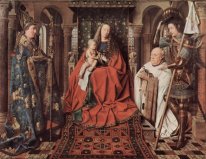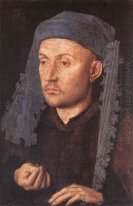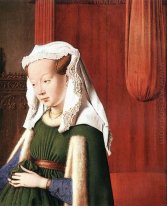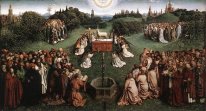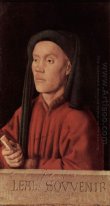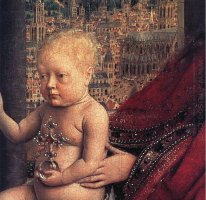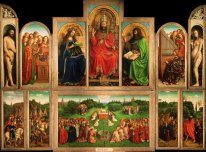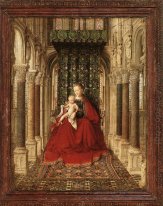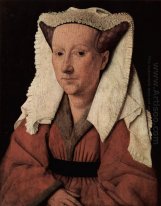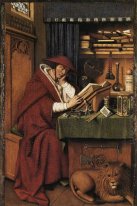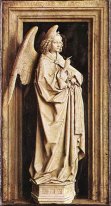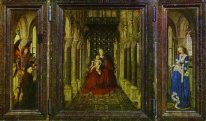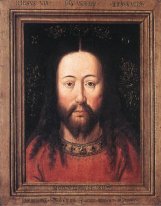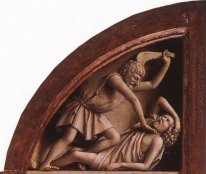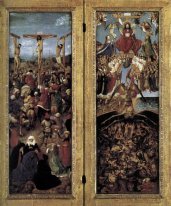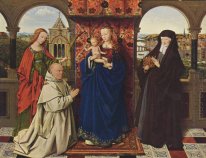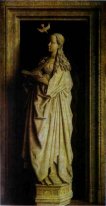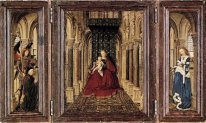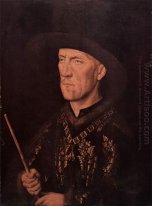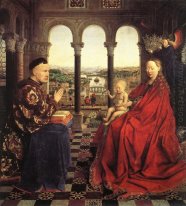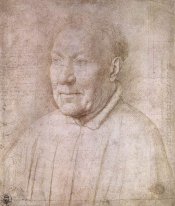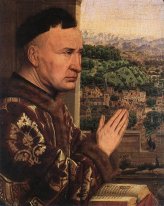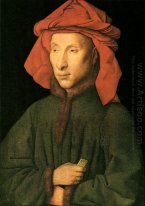Jan van Eyck

Jan van Eyck is the most famous member of a family of painters traditionally believed to have originated from the town of Maaseik, in the diocese of Liège. The work of the van Eycks, epitomized in the Ghent Altarpiece, brought an unprecedented realism to the themes and figures of late medieval art.
The date of van Eyck's birth is not known. He had to have been born 1395, or earlier. Jan van Eyck has often been linked as brother to painter and peer Hubert van Eyck, because both have been thought to originate from the same town, Maaseik in Limburg (Belgium).
Following the death of John of Bavaria, in 1425 van Eyck entered the service of the powerful and influential Valois prince, Duke Philip the Good of Burgundy. Van Eyck resided in Lille for a year and then moved to Bruges, where he lived until his death in 1441.
A number of documents published in the twentieth century record his activities in Philip's service. He was sent on several missions on behalf of the Duke, and worked on several projects which likely entailed more than painting. As a painter of the Duke, Jan van Eyck was exceptionally well paid and his art and person were held in extraordinarily high.
Jan van Eyck produced paintings for private clients in addition to his work at the court. Foremost among these is the Ghent Altarpiece painted for Jodocus Vijdts and his wife Catherine Borluut. It has had a turbulent history, surviving the 16th-century iconoclastic riots, the French Revolution, changing tastes which led to its dissemination, and most recently Nazi looting. When World War II ended it was recovered in a salt mine and the story of its restoration drew considerable interest from the general public and greatly advanced the discipline of the scientific study of paintings. No less turbulent was the history of the interpretation of this work. Since an inscription identifies it as a collaborative effort of Jan van Eyck and his brother Hubert, the question of who painted what, or "Jan or Hubert?" has become a mythical one among art historians. Some even question the validity of the inscription, and thus Hubert van Eyck's involvement.
Exceptionally for his time, van Eyck often signed and dated his paintings on their frames, then considered an integral part of the work. However, in the celebrated Arnolfini Portrait (London, National Gallery) reproduced above, van Eyck inscribed on the (pictorial) back wall above the convex mirror "Johannes de Eyck fuit hic 1434 (Jan van Eyck was here, 1434). The painting is one of the most frequently analyzed by art historians, but in recent years a number of popular interpretations have been ruled out.









